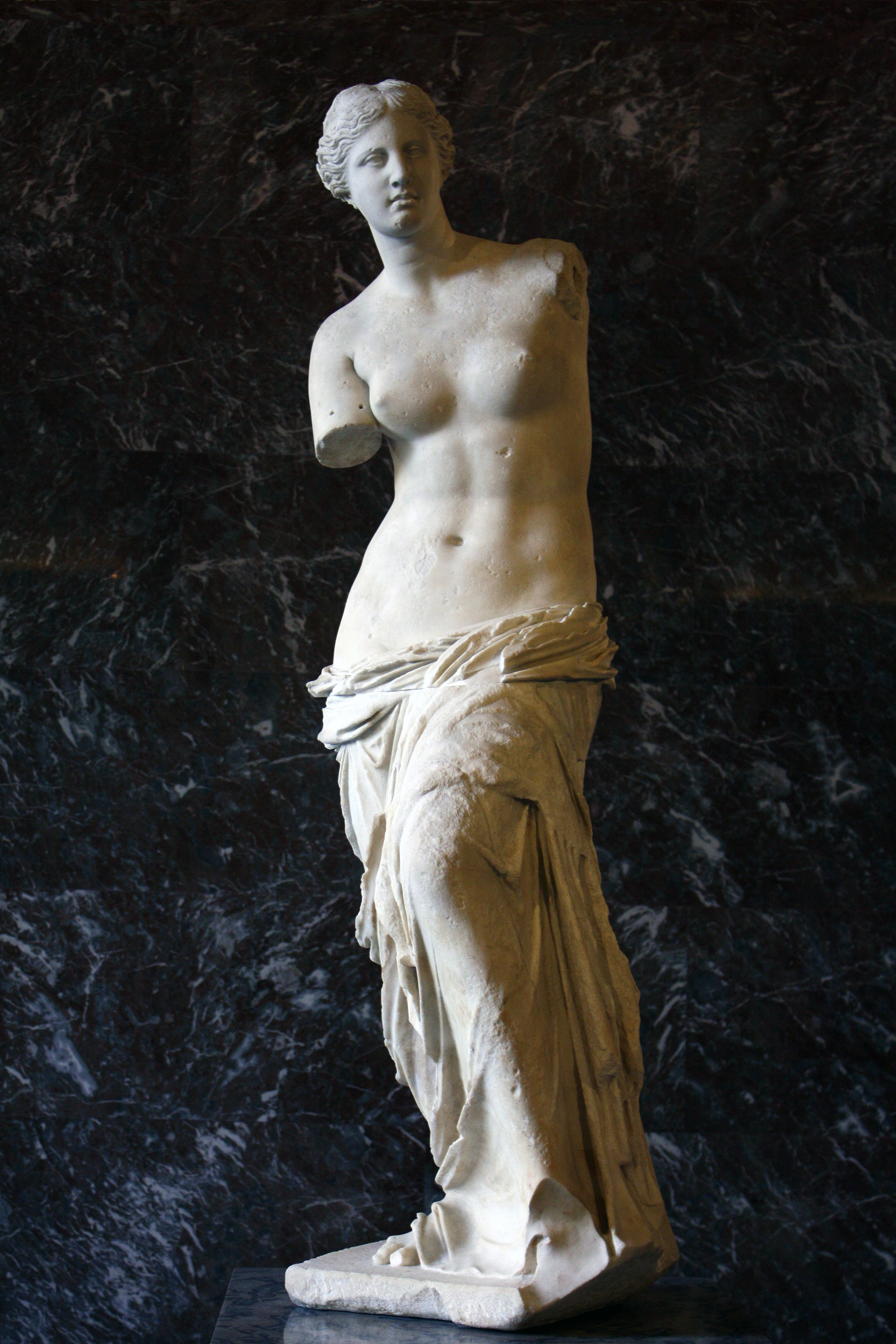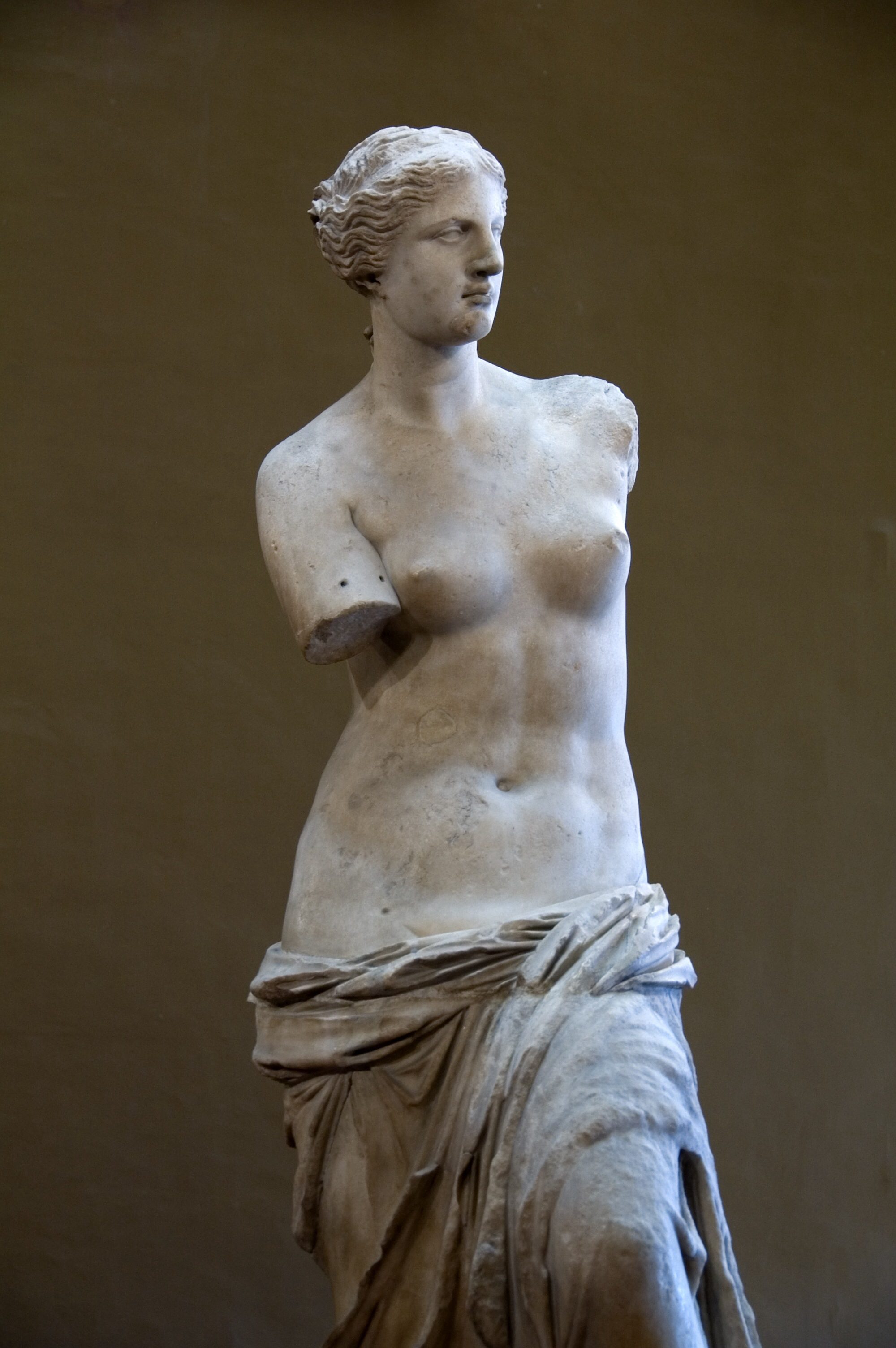Aphrodite of Milos, better known as the Venus de Milo, is an ancient Greek statue and one of the most famous works of ancient Greek sculpture. It is believed to depict Aphrodite, the Greek goddess of love and beauty (Venus to the Romans). The arms and original plinth were lost following its discovery. From an inscription that was on its plinth, it is thought to be the work of Alexandros of Antioch. The statue is named after the Greek island of Milos, where it was discovered. The statue has sometimes been thought to be a replica, freely inspired by an original from the late 4th century BC, because of its resemblance to the Aphrodite of Capua. The Venus de Milo certainly revives the classical tradition, but would appear to be a classicizing re-creation dating from the late 2nd century BC. The goddess' air of aloofness, the harmony of her face and her impassivity are stamped with the aesthetics of the 5th century BC; the hairstyle and delicate modeling of the flesh evoke the works of 4th-century sculptor Praxiteles. However, the sculpture reflects innovations that appeared during the Hellenistic period, between the 3rd and 1st centuries BC. The spiral composition, the positioning of the figure in three-dimensional space, and the small-breasted, elongated body are characteristic of this period. The goddess is arrested in time, holding her legs together as the drapery slides over her hips. Her nudity contrasts with the effects of light and shade of the finely-detailed drapery. This one is for one of our donors. Marshall, thank you for being so generous!




Venus de Milo
marble • 203 cm
 Alexandros of Antioch
Alexandros of Antioch